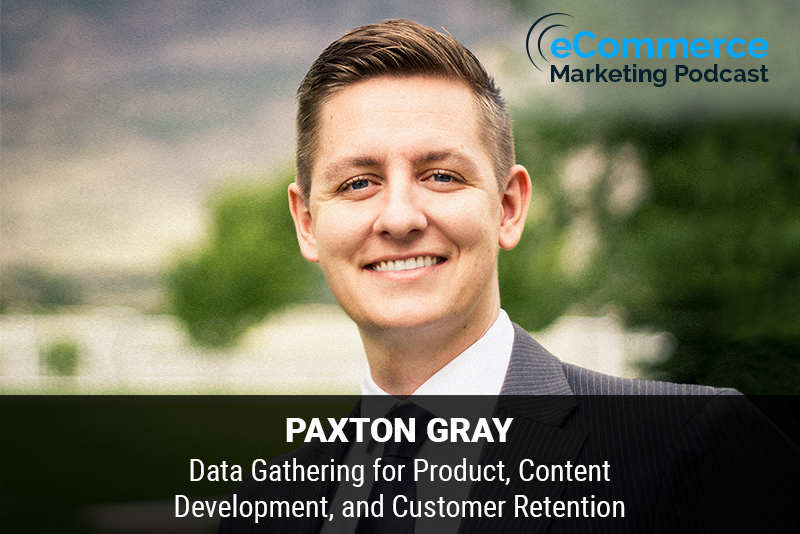
The eCommerce Marketing Podcast walks you through everything that goes into ecommerce marketing — from inbound marketing to paid advertising to conversions. Learn the strategies top marketing experts use to grow their businesses.
Marketing Strategies Revealed in this Episode:
- Methods and strategies when gathering data for product development
- Methods and strategies when gathering data for content development
- The different methods and strategies when gathering data for customer retention
- The best ways to measure the efficacy of these methods and strategies

Episode Title: Leveraging Data for Product Development and Customer Retention
Host: Arlen Robinson
Guest: Paxton Gray, CEO of 97th Floor
In this episode of the E-commerce Marketing Podcast, Arlen Robinson interviews Paxton Gray, CEO of 97th Floor. Paxton shares his insights on using data to drive product development, content creation, and customer retention. With over a decade of experience in digital marketing, Paxton emphasizes the importance of data-driven decision-making and offers practical strategies for e-commerce businesses to optimize their marketing efforts.
Key Takeaways:
- Introduction and Background [00:00 – 05:00]
- Paxton’s journey into digital marketing and his role at 97th Floor [01:00].
- The evolution of digital marketing and its increasing legitimacy in the industry [03:00].
- Data Gathering for Product Development [05:00 – 15:00]
- Importance of keyword research and avoiding reliance on gut feelings [06:00].
- Using competitors and micro-publishers to find valuable keywords [08:00].
- Example: Shifting product focus based on keyword research for ski belts [12:00].
- Content Development Strategies [15:00 – 25:00]
- The significance of creating user-centric content with clear next steps [16:00].
- Implementing semantic analysis to ensure comprehensive and useful content [18:00].
- Case study: Improving content for a chemical company by identifying relevant topics and keywords [22:00].
- Customer Retention Techniques [25:00 – 35:00]
- Conducting a customer experience review to understand the user journey [26:00].
- The importance of AB testing in learning about customer preferences and optimizing conversion rates [30:00].
- Using AB testing insights to enhance overall marketing strategies [32:00].
- Measuring the Effectiveness of Marketing Strategies [35:00 – 40:00]
- The role of AB testing in validating hypotheses and improving marketing campaigns [36:00].
- Recommended traffic benchmarks for effective AB testing (10,000 visits/month) [38:00].
Guest Info:
- Name: Paxton Gray
- Position: CEO of 97th Floor
- Website: 97th Floor











